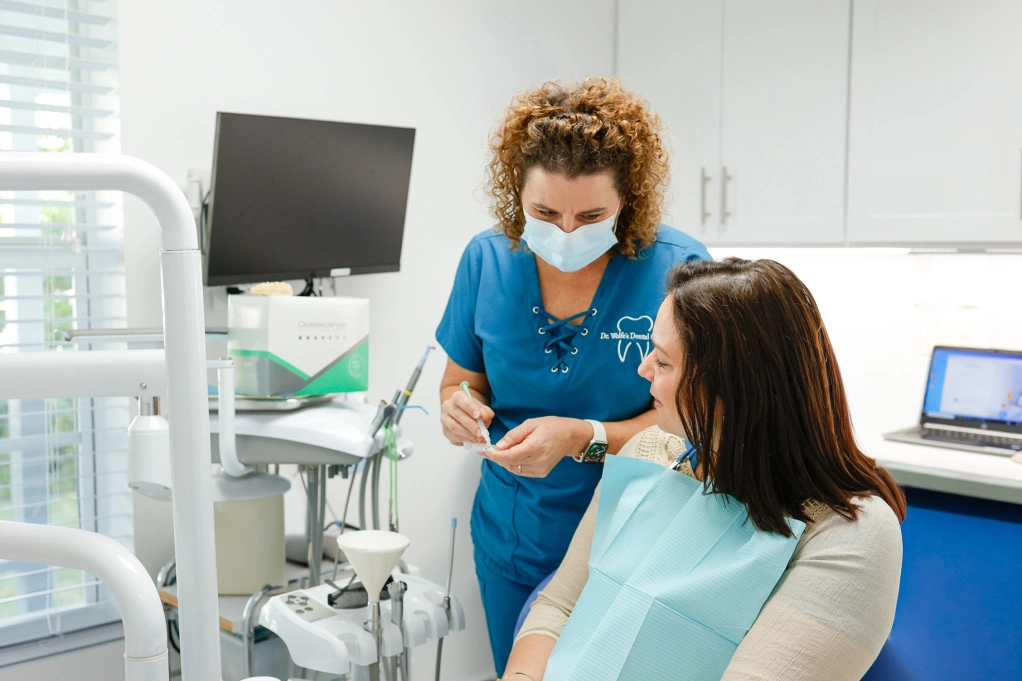
Whitening
There’s something about a bright, clean smile that just makes you feel better walking into a room — or even looking at old photos. Whitening your teeth is one of the simplest ways to make a visible difference without any major procedures. But if you’ve ever stood in a pharmacy aisle trying to pick the “best” whitening kit, you already know the options can be overwhelming — and not always effective.
What Makes In-Office Whitening Different?
In-office whitening is the answer for those who want a noticeable and rapid makeover. Let’s start with the obvious: professional whitening is faster. Much faster. If you’ve got a special event coming up — or you’re just tired of waiting around for strips or pens to work — the in-office method might be the reset you’re looking for.
It takes about an hour. The solution we use is stronger than anything you’ll find on a shelf, and because it’s applied under clinical supervision, there’s less risk to your gums or enamel. We don’t just “whiten” — we make sure the treatment works for your teeth, not just in general.
Some patients walk out with results that are several shades lighter — often in one visit.
Prefer Whitening at Your Own Pace?
Take-home whitening trays are a great alternative for those who prefer a slower, more flexible approach. These trays are custom-made to fit your teeth comfortably, paired with a professional-strength whitening gel you apply at home over several days or weeks.
This approach is particularly useful for those with mild-to-moderate staining who wish to whiten gradually and covertly, or for preserving results following in-office treatment.
What About Tooth Sensitivity?
It's a legitimate and widespread concern. Temporary sensitivity may occur with whitening chemicals, especially if the teeth are already sensitive to heat or the enamel is thin. As a result, a comprehensive evaluation is the first stage in any whitening treatment.
Treatments may be tailored to your specific needs, and sensitivity is typically temporary. In certain circumstances, applying desensitizing toothpaste or spacing out applications might make a significant impact.
Is Whitening Right for Everyone?
Surface stains, such as those brought on by coffee, tea, wine, or ageing enamel, respond well to whitening. Deeper stains (sometimes referred to as inherent discolouration) or teeth having veneers, crowns, or fillings are less amenable to its effects.
Before recommending treatment, your dentist will examine your teeth and let you know if whitening is likely to produce the outcome you’re hoping for. If it’s not the best fit, other cosmetic options may be available.
A bright smile should never come at the expense of comfort or safety. With professional guidance, you can lighten your teeth with confidence — and without guesswork.

